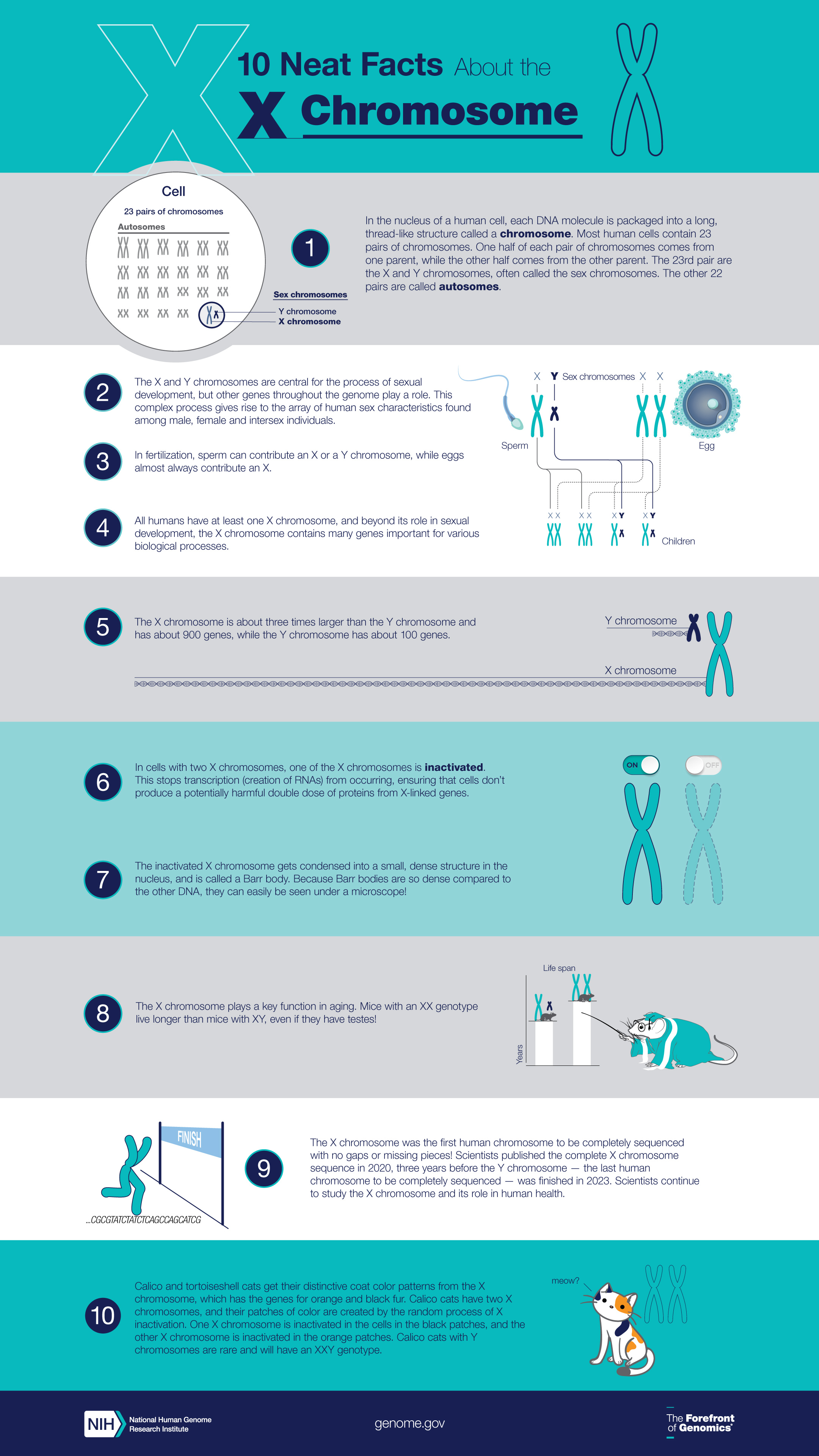X Chromosome Infographic
The X chromosome is part of sexual development and many other biological processes, including how some cats get their distinctive coat colors.

Last updated: May 28, 2024
Scan to visit
Due to reduction in workforce efforts, the information on this website may not be up to date, transactions submitted via the website may not be processed, and the agency may not be able to respond to inquiries. Note: Securing and protecting this website will continue.
The X chromosome is part of sexual development and many other biological processes, including how some cats get their distinctive coat colors.

Last updated: May 28, 2024
